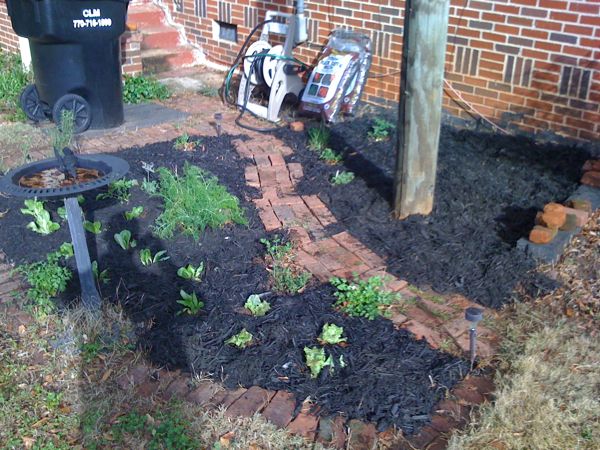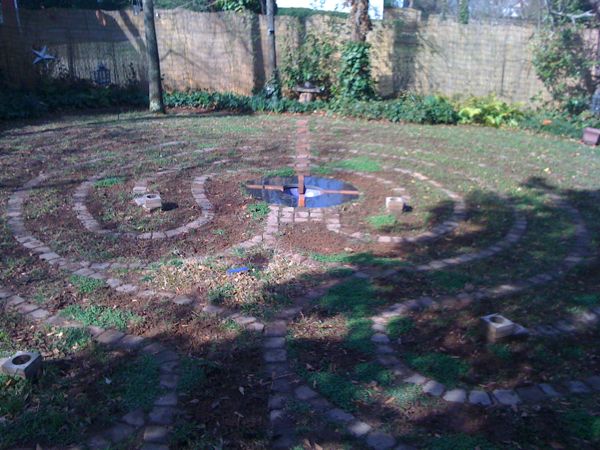I think I’m going to force myself to write every day this week.
Today was the first day of the school system’s winter break. Weather was pleasant, most pleasant in the afternoon, and I took advantage of that, as I will describe in a moment.
This break kind of sneaked up on me. We had the week off in January because of the ice, and there’s been all the excitement of getting the iPads in and getting them up and running, plus other distractions, and I mostly forgot that I was about to have a whole week off with no real responsibilities. At the eleventh hour last week, so to speak, I decided on a couple of tasks I might work on.
One of course is the cello sonata. I have avoided working on it, because I have no real ideas for the second movement. So this week will be dedicated to straining out stuff that’s awful. Like horrific. Like you will never hear it.
Of course there are things to do around the house, so I made a list. On Saturday I raked out the labyrinth and tidied it up for a Lichtenbergian gathering. I need to write about that over on the Lichtenbergian site.
Today I raked the front yard and did some maintenance on the landscaping across the front, clearing out the dead stems and stuff so that the green can burst forth, which it is already beginning to do. I put off truly revamping the herb garden, but I also cut back all the dead stuff and pulled up plants past their prime. And trimmed that rosemary bush! Why is it that the herbs you rarely use grow like weeds?
I finished reading Wolf Hall, which is an amazing, amazing book. It’s a novelization of the career of Thomas Cromwell under Henry VIII, and it’s a dazzler. I cannot recommend it highly enough. It does not cover his entire life, stopping at a significant moment, so perhaps there will be a sequel. I’d be delighted.
I’m also determined this week to meditate more seriously. I went to the labyrinth and sat in the sun and meditated for ten minutes. I was not very successful, too much brainbuzz going on, but it’s a start.
I also decided I would use the labyrinth as a place to focus my thoughts on the cello sonata. I retrieved my music moleskine and walked the labyrinth for about an hour, forcing myself to imagine music and to transcribe it. This is not my usual working method of course. Normally I must have the keyboard and computer in front of me, or I get nothing done.
Today I forced myself to pull the music from inside. I was relatively successful, filling a page in the tiny notebook with sketches that might actually work.
The problem is that I have planned the second movement to be very, very static, without the cantabile of the singing cello, and how do you sing that to yourself as you pace the labyrinth? If your melodic line, such as it is, is merely half-steps or repeated notes, then you have to start thinking about texture, about pauses/silence, about other structural assets you might deploy.
So that was useful. Weather permitting, I shall attempt this strategy all week. I shall try not to input it into the computer until Friday. Let’s see how this works.
And now, off to Masterworks Chorale.


